Animal welfare, once considered a fringe topic in the livestock business, has now become a core objective of Betagro’s farm production strategy.
As part of a rethink of how it houses broilers, layers and hogs, the company is installing newly designed equipment that prioritizes animal comfort, minimizes injuries and encourages the animals to express natural behaviors.
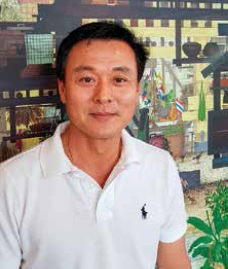
“We believe that food animals treated humanely in sound environments will be healthier, need less medication and offer producers better profits. Humane farming could also be resource efficient and generate less waste when compared with intensive farming which is potentially harmful to the environment,” said Jakkrin Taepaisitpong, senior vice-president of corporate social contribution.
Betagro, he added, took up animal welfare long before the issue became of interest to the general public because keeping animals healthy and improving their well being has always made good business sense.
The company’s animal welfare strategy is based upon the “ five freedoms” that livestock producers are obligated to provide for their animals: freedom from hunger and thirst; freedom from discomfort, pain, injury or disease; the freedom to express normal behavior; and freedom from fear and distress.
“Betagro’s top management takes animal well-being seriously and that has prompted us to embrace new technologies and take a step forward. Animal welfare matters. It is the real deal,” said Mr Jakkrin.
Betagro commercial eggs, pork and poultry meat are certified antibiotic-free by NSF, he added.
Rawat Chantong, vice-president of livestock production, said the animals’ ability to express their behaviors freely and live in comfort without pain and fear is Betagro’s most important goal.
Decisions on operating models are based on empirical evidence. Validation trials on a commercial scale are mandatory to prove whether the new ideas are welfare friendly and doable on a large commercial scale.
“Do not believe hearsay coming from textbooks or someone you know. Circumstances change. Go back to the basics. Find the root causes,” Mr Rawat said.
Conventional wire cages are becoming less acceptable. Betagro weighed various options in tailoring its own models which are commercially viable and generate wholesome eggs without infringing on the hens’ welfare.
Layer hens are not beak trimmed. They are reared in enriched cages fitted with perches, curtained nesting boxes and a scratch-pad area. The average area per bird is 800 sq cm, much larger than the typical 450 sq cm/bird in a battery cage system.
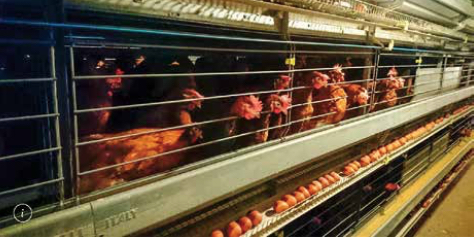
Feeder space is around 12 cm/bird, perch space 17 cm, nest space 63 sq cm, and 26 sq cm of scratch pad space. Manure is removed from the house once daily.
The enriched cage encourages the birds to express their natural behaviors such as walking, wing flapping and stretching.
The birds have stronger bones, and their feet and claws are in better condition. Hen/day egg production, overall egg quality and mortality is on par with industry standards, said Mr Rawat.
Investment cost per bird is higher due to reduced stocking density, and operating costs are slightly higher. But in the long run, higher production costs may not matter much after depreciation costs are written off.
The enriched cage system has become standard at all of Betagro’s new layer farms. They are already in use at Betagro’s new layer farms in Songkhla and Krabinburi.
Over 30% of Betagro eggs sold across Thailand come from hens reared in enriched cages. The company plans to convert all poultry houses over to the new caging system in the near term, Mr Rawat added.
Free-range layer farming
Betagro’s free-range farming project is underway. It supplies around 8,000 pieces/day for consumers in the Bangkok area and could be scaled up if demand increases.
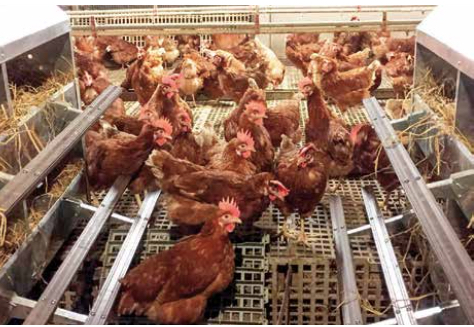
Under the cage-free production system, the hens are free to roam in and out of the layer houses during the laying cycle and are allowed to have unlimited access to food and water.
In the United States and the UK, most major food retailers and supermarkets are planning to sell cage-free eggs by 2025.
Broiler welfare improvements
“We have done everything possible to achieve the five freedoms, and we are still prepared to do even more to revamp animal welfare practices,” said Sunisa Maud-En, corporate quality assurance director.
“We are committed to improving broiler welfare, because our customers have high expectations,” she added.
Enrichment objects are being put in broiler houses to encourage physical activity and improve the well-being of the birds. This aims to break the monotony of conventional production systems where the birds are reared with a stocking density above 30 kg/sq m.
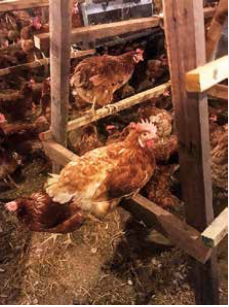
Reduced stocking density allows the broilers to express normal behavior such as pecking, perching, dust-bathing and preening. Also, it alleviates stress and injuries from hock burn and foot pad dermatitis and thereby reduces the overall culling rate.
Enrichment objects have been tested, for example, to find the right number of perches and the correct height so that bigger birds feel comfortable perching, said Ms Sunisa.
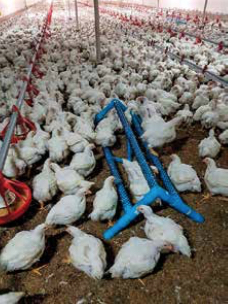
Recommended items added to the broiler houses are based on availability in the area, low cost, ease of cleaning and disinfection.
Production on commercial scales has confirmed that weight gain, mortality and FCR are no different from the trials. Also, the financial return is not substantially different from conventional operations.
As of January 2019, Betagro broiler houses and those of its contract growers must include straw bales which provide a substrate for dust bathing, as well as perches and pecking objects, said Ms Sunisa.
The broiler houses have been modified to allow more natural light exposure to stimulate foraging activities. Some 3% of the total house area is illuminated with natural light.
Betagro now maintains stocking density at 28 kg/sq m, and is looking into the possibility of reducing that figure to 25 kg/ sq m. High stocking density leaves the broilers prone to breast blisters, foot-pad dermatitis, lameness, and hock burns. Wet litter and high ammonia concentrations are problems often found in barns with high stocking densities.
Ammonia and CO2 concentration in the barn is monitored, with the maximum limit of ammonia set at 20 ppm and CO2 20 ppm.
The company is aware of the sensitivity of fast-growing birds. Lameness and metabolic disorders are subtle and could occur due to a combination of nutrition, management and genetics.
Betagro therefore opts to harvest the male birds at 2.5-2.7 kg at 39 days and females at 40 days at 2.3-2.4 kg to avoid metabolic disorder issues.
Beak trimming in broiler breeders to reduce feather pecking and cannibalism was banned two years ago. Internal field trials showed that mortality and injuries after the ban on beak trimming are not significantly different than before. Overly aggressive male breeders are removed from the flocks.
Swine
Teeth grinding was banned more than three years ago. Udder and fighting injuries since then are not significantly different from before the ban, said Mr Rawat.
The piglets have ample space and enrichment objects which entice them to play thereby reducing boredom and aggression. Injuries and skin lesions have dropped. Thus, tail docking is not necessary.
Finishing hogs have 1.4 sq m of space vs the industry average of 1 sq m/head. Straw and enrichment items are put in the pens.
An effective non-castration method is being sought through gene identification and genomic selection. Other long-term goals include less invasive techniques to take fat samples to identify boar taint while the animal is still alive.
Antibiotic-free
Production costs are unchanged even though Betagro has stopped using antibiotics in piglet feed to prevent E. coli and Staphylococcus aureus.
Infection is associated with stresses that result from weaning and regrouping. The piglets have to be prepared for the transition and familiarized with creep and pre-starter feed ahead of time so that growth and intestinal development is not interrupted.
Stockmen familiarize the piglets with solid feed during the transition rather than use antibiotics. Adequate feeding at this point guarantees a healthy gut and well-performing animals, said Mr Rawat.
Nevertheless, sick animals are not deprived of treatment. They are treated with antibiotics that are not medically important to humans. The drugs are prescribed by veterinarians. Nevertheless, the sows and piglets treated with antibiotics are sold separately from those labeled antibiotic-free.
“Our veterinarians are helping us to gain new insights in improving animal health with the least medication,” he said.
Dynamic group housing
Group sow housing is used to reduce sow injuries and discomfort from conventional sow crates.
“Conventional crates are not cheap and we don’t know how soon they will be outdated. Therefore, it makes sound business sense to try the new welfare-friendly group housing,” Mr Rawat added.
Static groups were tried out, but it was found that dynamic group housing offers advantages as the animals are calmer. With multiple electronic sow feeding stations, the system is more secure. If one unit is not working, there will be other units still functioning.
In large dynamic groups, the sows do not establish a dominance hierarchy because the sow group periodically rotates to farrowing houses. Also, the size of the group is too large which leads to sows forming smaller cliques that cling together. Stocking density per gilt is 1.64 sq m and sows 2.25 sq m.
There is an area set aside for treating sick animals if they are unable to walk to the feeding stations. Straws is provided for chewing in the resting area, said Mr Rawat.
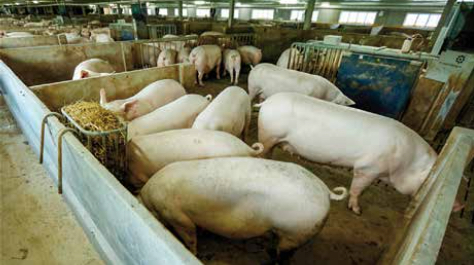
Betagro’s largest sow barn holds 200 sows. Electronic sow feeding (ESF) stations are installed. Each ESF station supports 60 sows/24-hour feed cycle. Gilts are trained to be familiar with ESF feeding stations, then they are mated and mixed with the group once pregnancy is confirmed.
An ESF sensor reads each RFID ear tag and then opens the door allowing the sow to walk in to have her ration. ESF dispenses the feed automatically based on the body condition of each individual sow. Feed allocation is precise. Once the sow has finished her ration, the computer will allow the rear gate to reopen, so she can leave and another sow can enter.
The system alerts the supervisor if a sow hasn’t eaten, prompting workers to identify the off feed sows and solve the problem.
Betagro also uses an ESF system with automated sow separation and heat detection. The ESF is programmable to sort individual sows or sow groups of the same age automatically for vaccinations, said Mr Rawat.
There is a boar enclosure located at the exit of the feeding station and a reader at the boar pen. The reader reads the ear tags of the sows that often visit the boar enclosure and automatically spray marker dye on them making them more visible and easier for the stockmen to check if the sows are ready for insemination.
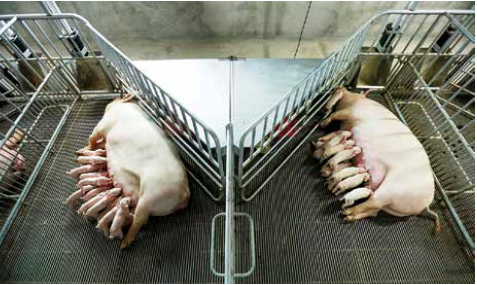
An auto-feeding system is used in farrowing units. The system is programmable for feeding frequencies, feeding times and amount of feed to meet individual sow requirements. Frequent feeding with the automated system encourages the sows to have better feed intake, which in the past was too labor-intensive to do manually. Therefore, they retain good body score, produce sufficient milk and return to estrus sooner which shortens the dry period, and produce weaned piglets with good body weight.
Betagro is examining welfare friendly monitoring solutions for large finishing operations that are more interactive with the processing unit. Such as system could monitor individual finisher weights, sort the animals per required weight, and forecast days to finishing.
Big data and analytics are the future, he said. Currently, Betagro is using SAP in the production system. The company is also examining new tools for analyzing large data sets to improve health surveillance.
